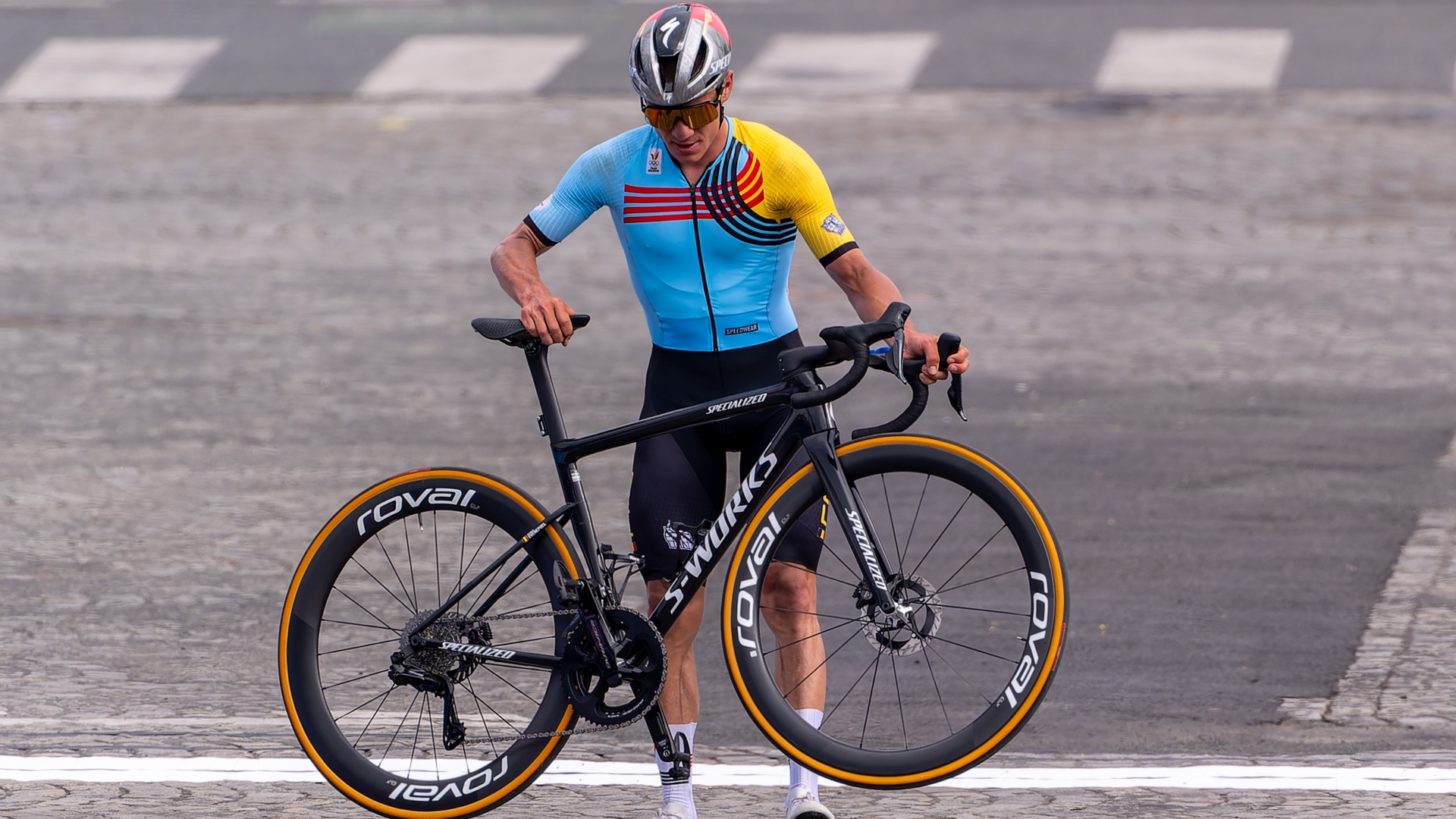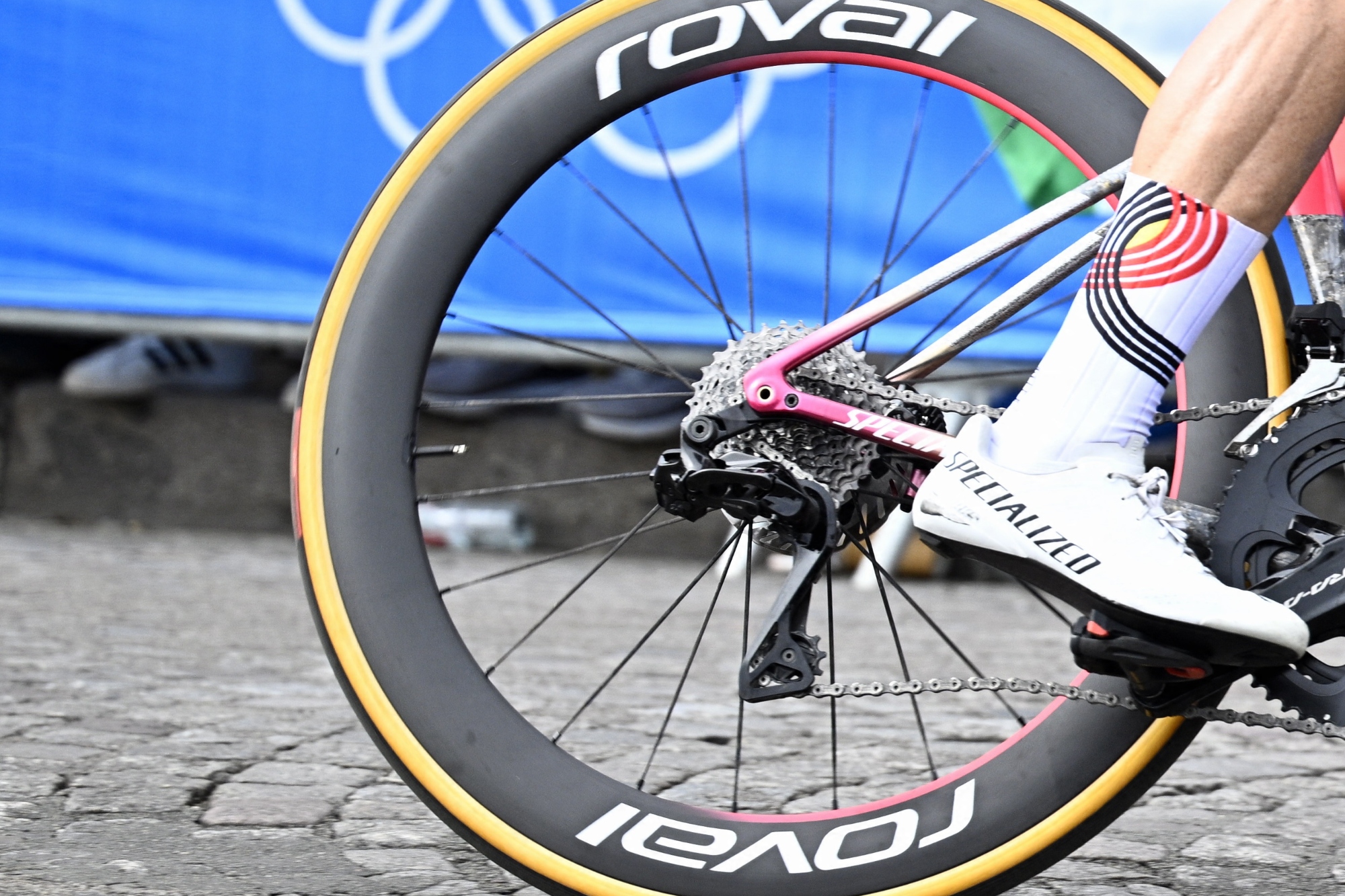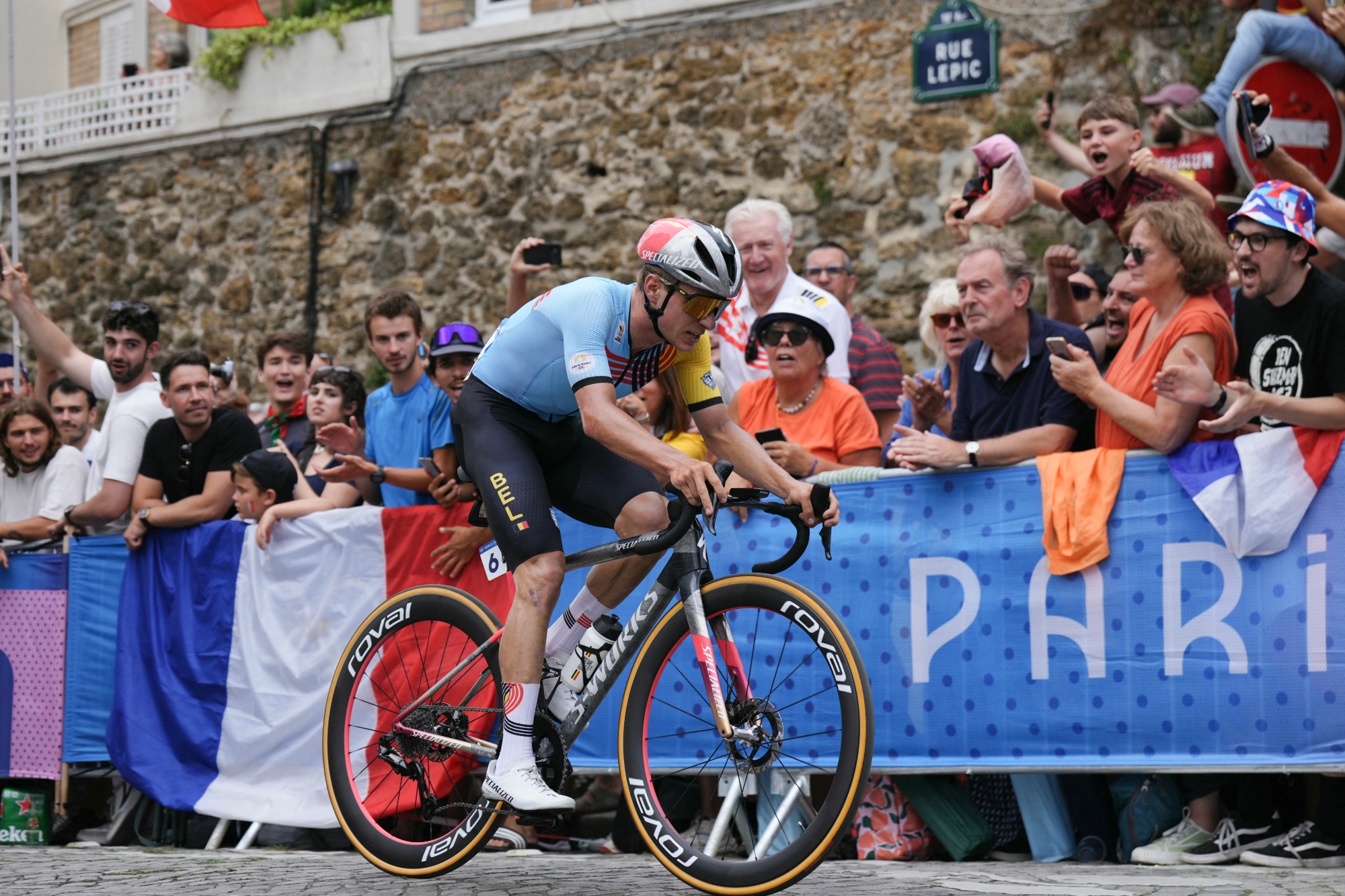Why was Remco Evenepoel running inner tubes during the Olympic road race - where he punctured in the closing kilometres?
The majority of the professional peloton has moved over to tubeless systems but the Olympic champion isn't one of them


It's been a rather resplendent week for Remco Evenepoel, claiming two gold medals on the road: first in the Olympic Time Trial and then in the Olympic Road Race.
However, the latter title very nearly came unstuck when the Belgian superstar suffered a puncture inside the last 10 kilometres of the race, with a little over a minute of time to play with.
Evenepoel was in the minority within the peloton in that he was still using inner tubes, forgoing the switch to tubeless tyres, which are generally considered to be more reliable in the fight against punctures.
Luckily for Evenepoel, mechanics were on hand to perform a speedy bike change. But the event begs the question—why is Evenepoel still using inner tubes?

The Belgian rode 260km on a 50th anniversary special edition Specialized before changing bike
Evenepoel rides for a Specialized-sponsored trade team, Soudal Quick-Step, and athletes use trade team set-ups for the Olympic road events. Thus, Evenepoel uses the Specialized tyres, and the Turbo Cotton race tyres to be precise.
Available only in a 24 and 26mm widths, the tyres have been in circulation for few years now. In fact, we first reviewed them back in 2018, where we praised the tyres for solid grip and supple ride quality.
However, these tyres are designed for use with inner tubes only—they are not tubeless-ready. Specialized does have the Turbo 2Bliss in its range, which is a similar-level tyre, though a glance across the peloton will tell you that Specialized-sponsored riders generally seem to opt for the Turbo Cotton.
The latest race content, interviews, features, reviews and expert buying guides, direct to your inbox!

Look closely and you can see the tape around the inner tube, and the Turbo Cotton branding on the tyre
Despite the rise of tubeless technology, sticking with tubes is hardly a unique approach among the general public, and many tyres on the market are still only designed for use with inner tubes.
But the vast majority of the peloton has switched over to tubeless, except for the Specialized-sponsored trade teams, which were seen riding the Turbo Cotton tyre as recently as last month's Tour de France.
The rise of tubeless systems in the WorldTour is mainly due to two things. Firstly, tubeless tyres are usually considered to be faster than their tubed equivalents due to fewer components in the wheel tyre system. Every time you introduce another surface, such as an inner tube or different layers of an old-school tubular tyre, you introduce more friction. Fewer contact surfaces with just a wheel rim and a tyre are, therefore, faster.
And then there's puncture resistance. It's true that any tyre can puncture: if only I had a pound for every time I said, "There's no such thing as a puncture-proof tyre," back when I was working in a bike shop, I'd have a fleet of £10,000 bikes by now.
That said, tubeless systems generally improve your chances of avoiding a bike change by sealing smaller nicks or even slowing a puncture down in the final stages of a race.

So why do Evenepoel and others sponsored by Specialized still ride inner tubes?
Well, back in the Tour Down Under, Soudal Quick-Step mechanic Guido Scheeren told Cycling Weekly: "It's still required from Specialized," adding, "I don't want to say we had trouble, but they went backwards. We still have a fast tyre, the [Turbo] Cotton; the riders like them. Also, Specialized still produces and sells them, so it's also a reason that we're racing on them."
Since then, Kevin Grove, a mechanic at Bora-Hansgrohe, told Cycling Weekly that of the tyres available to the team, the Turbo Cotton with latex inner tubes is "the fastest we have."
Cycling Weekly did contact Specialized about the matter, and the U.S. brand told us: "Riders have the ability to choose the equipment they prefer that they feel is fastest on the day and suits the course."
The combination of speed, rider preference and the available choices seem to be the reason behind the tyre selection for Specialized riders—and we can only assume the same reasoning extends to the double Olympic Champion.
It remains to be seen whether Specialized will continue to support the Turbo Cotton over increasingly standard tubeless options, but until then, it's up to the team mechanics to keep checking those tyres for nicks and debris.

Joe is Cycling Weekly's former tech writer. He's always had a love for bikes, since first riding a two wheeled steed before the age of four. Years down the line, Joe began racing at 16, and enjoyed great experiences internationally, racing in Italy, Spain and Belgium to name a few locations. Always interested in tech, Joe even piloted his Frankenstein hill climb bike to a Junior National Title in 2018. After taking a step back from elite level racing in April 2022, Joe joined our team as a freelancer, before becoming Tech Writer in May 2023.